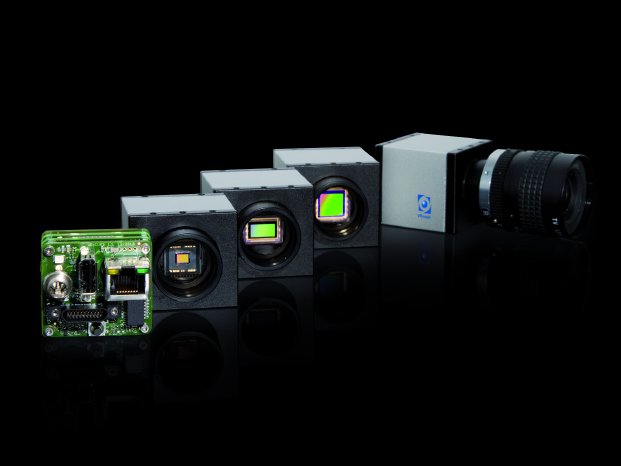"During development of the new camera platform, the focus was not only on increasing performance and storage capacity" says Oliver Menken, Director Sales & Marketing at VRmagic. "It has always been our strategic aim to design a platform that offers even more flexibility to our customers. The increased number of key features results in a greater degree of freedom for the development of cost-efficient and customized embedded cameras."
The extended software portfolio ranges from open source software to image processing libraries of well-known manufacturers to a MONO compatible .NET interface. With this interface, applications developed on a PC can be copied to and used on a camera without the use of a cross compiler.
Further characteristics of the new camera platform are:
- USB (host/device)
- UART (RS232/RS485)
- Up to 44 GPIOs
- Second Gigabit Ethernet interface (optional)
- Wake on LAN
- Audio (input and output)
- HDMI output
- RGB888 (input or output)
- S-Video output
- SD card (bootable)
- CAN bus
- SATA
- I2C
- SPI
New sensors: single-sensor cameras now available with MT9M021 from Aptina
In addition to the already available sensors from Aptina (MT9V024, MT9M001 and MT9T031), CMOSIS (CMV2000 and CMV4000), and Sony (ICX445), intelligent single-sensor cameras and USB single-sensor cameras will be presented with the MT9M021 from Aptina at VISION 2012.
The 1/3" sensor built in the VRmDC-16 and the VRmC-16 is equipped with a global shutter and delivers 45 frames per second at full frame rate and 60 frames per second at 720p. With this sensor VRmagic offers its customers an attractive resolution with a high frame rate at the price of a VGA camera.
VRmDAVC-2: Efficient networking of analog cameras
In combination with analog cameras, the new intelligent framegrabber VRmDAVC-2 can perform image processing tasks fully autonomously. Image data either is processed directly in the intelligent framegrabber or transmitted via Ethernet for further processing.
The intelligent framegrabber features the new camera platform or a 300 MHz ARM9 processor and a 600 MHz DSP with 4800 MIPs. The direct connection of peripherals (for example monitor via HDMI or WLAN via USB host) and control of equipment via RS232 or GPIOs is possible. The USB variant needs no additional power supply, as it is supplied via USB. The VRmagic API offers convenient access to the image data on any PC.
Visit us at the VISION 2012 in hall 1, booth D81. VRmagic presents a wide range of components for image processing.


